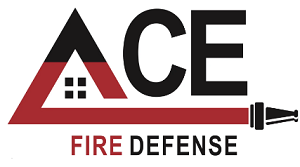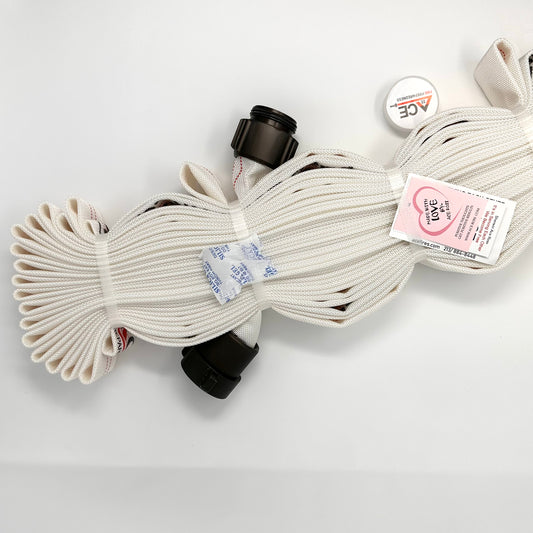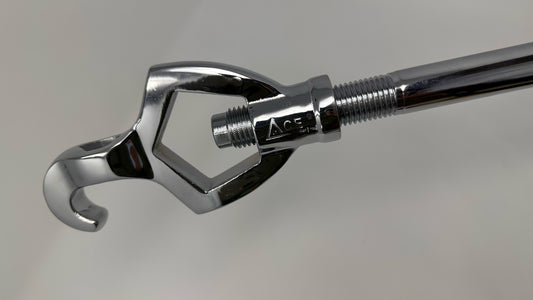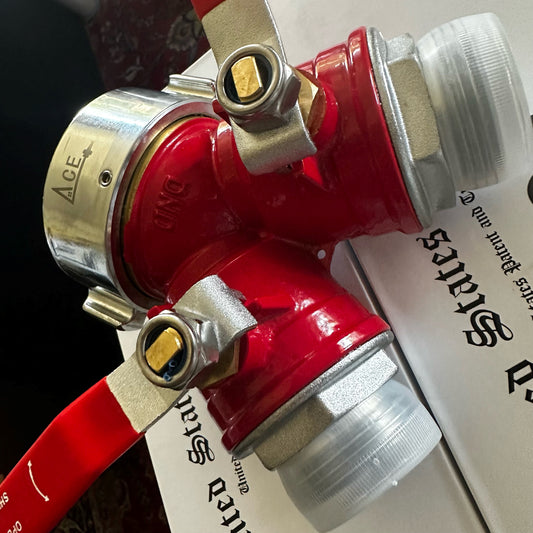How Our Fire Hoses Are Manufactured
ACE fire hoses are meticulously manufactured in a dedicated facility that specializes in producing hose products exclusively for fire departments.
Here's a simplified explanation of how a typical double jacket, rubber-lined fire hose is made:
Preparing the Yarn:
- The hose jacket is woven using two types of yarn: warp yarns and filler yarns.
- Warp yarns run lengthwise and provide abrasion resistance.
- Filler yarns are wound in a spiral and give the hose strength to withstand water pressure.
Weaving the Jackets:
- The warp yarns are placed on a creel and fed through a circular loom.
- Filler bobbins with the filler yarn are set in the loom, and the weaving process begins.
- The loom weaves the jacket by crisscrossing the warp yarns and trapping the filler yarn between them.
- The inner and outer jackets are woven separately, and the outer jacket may be coated if needed.
Extruding the Liner:
- Blocks of uncured rubber are fed into an extruder, which warms and presses the rubber to form a tubular liner.
- The liner is then heated and vulcanized to make it strong and pliable.
- A thin sheet of uncured rubber is wrapped around the outside of the liner using a rubber calendar.
Forming the Hose:
- The jackets and liner are cut to the desired length.
- The inner jacket is inserted into the outer jacket, followed by the liner.
- Steam is injected into the hose to make the liner swell and bond with the inner jacket.
- Metal end connections, or couplings, are attached to the hose to form a seal.
Pressure-Testing the Hose:
- The hose is pressure tested to ensure its integrity and safety.
- The testing is done at high pressure, typically 600-800 psi, and inspected for leaks and secure couplings.
- After testing, the hose is drained, dried, rolled, and shipped to the customer.
This simplified overview highlights the key steps involved in manufacturing a fire hose, emphasizing the yarn preparation, weaving of jackets, extrusion of the liner, formation of the hose, and pressure testing to ensure quality and reliability.



